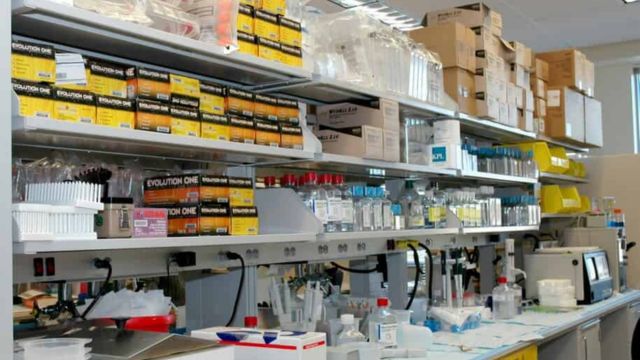In today’s competitive landscape, medical manufacturing companies must constantly innovate and refine their processes to stay ahead. One of the most powerful tools available to these companies is data analytics. By harnessing the power of data, manufacturers can improve production efficiency, enhance product quality, reduce costs, and ensure better compliance with regulations. This approach is crucial in an industry where safety, precision, and quality are paramount.
In this article, we’ll explore how data analytics is revolutionizing medical manufacturing and how companies can use it for continuous improvement in their processes.
What is Data Analytics in Medical Manufacturing?
Data analytics refers to the process of inspecting, cleaning, transforming, and modeling data to discover useful information, inform conclusions, and support decision-making. In medical manufacturing, it involves analyzing data generated throughout the production process, including machine data, quality control reports, and supply chain information.
By applying advanced analytical techniques, medical device manufacturers can extract actionable insights from this data to optimize their processes. This not only helps in improving the efficiency of manufacturing but also ensures that the products meet the stringent requirements of healthcare regulations.
Benefits of Data Analytics in Medical Manufacturing

Improved Product Quality
One of the key benefits of data analytics in medical manufacturing is its ability to significantly enhance product quality. By continuously monitoring production processes, manufacturers can detect potential defects or irregularities early in the manufacturing cycle. For example, sensors placed on machines can gather real-time data on temperature, pressure, and speed. This data can then be analyzed to predict when a machine is likely to malfunction, allowing manufacturers to conduct preventive maintenance and reduce downtime.
Moreover, data analytics can be used to optimize the production process by identifying areas where defects commonly occur, enabling manufacturers to refine their techniques and reduce defects over time.
Predictive Maintenance
Predictive maintenance is another area where data analytics is having a profound impact. Rather than relying on scheduled maintenance, predictive maintenance uses data to predict when equipment is likely to fail. By analyzing historical performance data and sensor readings, manufacturers can forecast potential breakdowns, schedule repairs at the most convenient times, and reduce the likelihood of unexpected downtime. This proactive approach leads to cost savings and ensures uninterrupted production, which is particularly critical in medical manufacturing where time is of the essence.
Enhanced Regulatory Compliance
Medical device manufacturing is heavily regulated, and companies must adhere to strict standards set by organizations like the FDA and ISO. Data analytics helps manufacturers maintain compliance by automatically recording and storing relevant production data. This data can then be used to demonstrate adherence to regulatory standards during audits or inspections. Additionally, analytics can help identify areas where the production process may not align with regulations, allowing companies to take corrective actions before non-compliance becomes an issue.
Operational Efficiency
Data analytics plays a crucial role in streamlining manufacturing operations. By analyzing production data, manufacturers can identify inefficiencies in their processes and make adjustments to improve throughput. For example, analytics can reveal bottlenecks in the production line, inefficient resource allocation, or delays in the supply chain. By addressing these issues, manufacturers can reduce waste, optimize production schedules, and increase overall productivity.
Supply Chain Optimization
The supply chain is a critical component of medical manufacturing, as it ensures that all necessary raw materials and components are available when needed. By applying data analytics to supply chain management, manufacturers can gain greater visibility into inventory levels, supplier performance, and shipping times. This helps in making informed decisions about procurement, reducing excess inventory, and minimizing the risk of supply chain disruptions.
How to Implement Data Analytics in Medical Manufacturing
Implementing data analytics in medical manufacturing requires careful planning and the right tools. Here are a few steps manufacturers can take to integrate data analytics into their operations:
Invest in Data Collection Infrastructure
Before any analysis can begin, manufacturers need to establish a system for collecting relevant data. This may involve installing sensors on production equipment, integrating machine learning algorithms, or using enterprise resource planning (ERP) systems that track various manufacturing metrics.
Utilize Advanced Analytical Tools
Once the data is collected, it needs to be analyzed. Manufacturers should invest in advanced analytics tools such as machine learning, artificial intelligence (AI), and predictive analytics software. These tools help convert raw data into actionable insights that can drive improvements in manufacturing processes.
Focus on Data Quality
The quality of the data is essential for effective analysis. Manufacturers should ensure that their data collection methods are accurate and that the data is clean and free from errors. This includes verifying the data for consistency, completeness, and reliability.
Continuous Monitoring and Improvement
Data analytics is not a one-time solution; it requires continuous monitoring and refinement. Manufacturers should regularly assess their data analysis processes and update their systems as new data becomes available. The goal is to create a feedback loop that allows for ongoing optimization.
Challenges in Harnessing Data Analytics
While data analytics offers significant benefits, there are some challenges associated with its implementation in medical manufacturing. These include:
- High Initial Investment: Implementing advanced data collection and analysis tools can be costly, especially for small and medium-sized manufacturers.
- Data Security and Privacy: Medical manufacturing data is highly sensitive. Ensuring the security of this data is crucial, particularly when it comes to patient safety and confidentiality.
- Skilled Workforce: Manufacturers must have employees with the necessary skills to analyze and interpret data effectively.
Despite these challenges, the advantages of data analytics far outweigh the obstacles, making it an essential tool for modern medical manufacturing companies.
Conclusion
Data analytics is transforming the medical manufacturing industry by driving continuous improvement in product quality, operational efficiency, and regulatory compliance. By adopting data-driven decision-making, manufacturers can improve production processes, reduce costs, and stay competitive in the rapidly evolving healthcare market. With the right tools and strategy, manufacturers can harness the power of data to unlock new opportunities and achieve long-term success.
Stay Updated with the Latest in Medical Manufacturing and Supplies!
At JandJ Supplies, we are dedicated to bringing you the latest trends and updates in medical supplies, clinical engineering, and medical manufacturing. Subscribe to our newsletter to stay informed and ahead of the curve in the ever-evolving healthcare industry. Join our community of industry experts and get the knowledge you need to drive your business forward!
FAQ
What is predictive maintenance in medical manufacturing?
Predictive maintenance uses data analytics to predict when equipment is likely to fail. This allows manufacturers to schedule maintenance before a failure occurs, reducing downtime and preventing production delays.
How can data analytics help with regulatory compliance in medical manufacturing?
Data analytics helps manufacturers track and record all production processes, ensuring that they meet regulatory standards. This data can be used during audits to demonstrate compliance with FDA, ISO, and other regulations.
What tools are needed to implement data analytics in medical manufacturing?
Manufacturers need tools such as sensors for data collection, machine learning algorithms, predictive analytics software, and enterprise resource planning (ERP) systems to gather, process, and analyze data effectively.
What are the challenges of using data analytics in medical manufacturing?
Challenges include high initial investment costs, ensuring data security and privacy, and the need for a skilled workforce capable of analyzing and interpreting complex data.







